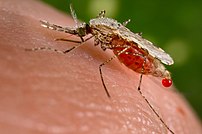[amazon_link asins=’B01IDM2V4Y,B0051DLYU6,B01FEMJNLA,B01JZ6GUW6,B01N2G5ZC9,B01F7XYG2W,B06X9Q9XHC,B01M0322EC,B01071E4LW’ template=’ProductCarousel’ store=’finmeacur-20′ marketplace=’US’ link_id=’423f3358-0614-11e7-86e7-97cb7c3b8218′]
Botanical Name : Barringtonia asiatica
Family: Lecythidaceae
Genus: Barringtonia
Species: B.
Kingdom: Plantae
Order: Ericales
Synonym: Mammea asiatica L., Barringtonia speciosa J.R.Forst. & G.Forst., Huttum speciosum (J.R.Forst. & G.Forst.) Britten, Agasta asiatica (L.) Miers, Michelia asiatica (L.) Kuntze.
Common Names: Fish Poison Tree, Putat or Sea Poison Tree. Barringtonia, Freshwater Mangrove, Indian Oak, Indian Putat • Assamese: Hendol, Hinyol, Pani amra • Bengali: Hijal • Hindi: Hijagal, Hijjal, Samundarphal • Kannada: Mavinkubia, Niruganigily, Dhatripala • Malayalam: Attampu, Attupelu, Nir perzha • Marathi: Tiwar, Newar, Sathaphala, Samudraphala • Oriya: Nijhira • Sanskrit: Abdhiphala, Ambudhiphala, Ambuja • Tamil: Aram, Kadambu, Kadappai, samudra pazham • Telugu: Kurpa • Urdu:
In Chinese: Bin Yu Rui (As B Asiatica), Mo Pan Jiao Shu (As B Speciosa), Yin Du Yu Rui (Taiwan).
In English : Balubiton, Barringtonia, Butong, Butun, Fish Poison Tree, Fish-Killer Tree, Fish-Poison Tree, Fish-Poison-Tree, Langasat, Lugo, Motong-Botong, Pertun, Putat Laut, Sea Poison Tree, Vuton
In Malay: Butong, Butun, Pertun, Putat Laut (Sarawak)
In Russian :Barringtonia Aziatskaia, Barringtonia Prekrasnaia (As B Speciosa)
In Spanish : Arbol De Los Muertos
In Thai :Chik Le
Habitat : Barringtonia asiatica is native to mangrove habitats on the tropical coasts and islands of the Indian Ocean and western Pacific Ocean from Zanzibar east to Taiwan, the Philippines, Fiji, New Caledonia, Solomon Islands, the Cook Islands, Wallis and Futuna and French Polynesia.
(Barringtonia asiatica is a common plant in the Malaysian Mangroves and wetlands such as the Kuching wetlands and Bako National Park. Barringtonia asiatica is known locally as Putat laut or Butun.)
Description:
It is a small to medium-sized tree growing to 7–25 m tall. The leaves are narrow obovate, 20–40 cm in length and 10–20 cm in width. Fruit produced as mentioned earlier, is otherwise aptly known as the Box Fruit, due to distinct square like diagonals jutting out from the cross section of the fruit, given its semi spherical shape form from stem altering to a subpyramidal shape at its base. The fruit measures 9–11 cm in diameter, where a thick spongy fibrous layer covers the 4–5 cm diameter seed.
The fruit is dispersed in the same way as a coconut – by ocean current – and is extremely water-resistant and buoyant. It can survive afloat for up to fifteen years; it was one of the first plants to colonise Anak Krakatau when this island first appeared after the Krakatau eruption. When washed ashore, and soaked by rainwater, the seeds germinate.
Medicinal Uses:
Constituents: Seeds contain hydrocyanic acid (toxic), triterpinoid saponins and gallic acid.
This tree has long been used for medicine, timber. In traditional medicine, when children suffer from a cold in the chest, the seed is rubbed down on a stone with water and applied over the sternum, and if there is much dyspnoea a few grains with or without the juice of fresh ginger are administered internally and seldom fail to induce vomiting and the expulsion of mucus from the air passages. More recently it has become the focus of research for pain-killing compounds.
Seeds are used to get rid of intestinal worms and the heated leaves are used to treat stomachache and rheumatism.
Other Uses:
Box fruits are potent enough to be used as a fish poison. The seeds have been used ground to a powder to stun or kill fish for easy capture, suffocating the fish where the flesh is unaffected.
Its large pinkish-white, pom pom flowers give off a sickly sweet smell to attract bats and moths which pollinate the flowers at night.
Known Hazards: All parts of the tree are poisonous, the active poisons including saponins.
Disclaimer:
The information presented herein is intended for educational purposes only. Individual results may vary, and before using any supplements, it is always advisable to consult with your own health care provider.
Resources:
http://en.wikipedia.org/wiki/Barringtonia_asiatica
http://ntbg.org/plants/plant_details.php?plantid=1466
http://www.flowersofindia.net/catalog/slides/Barringtonia.html
http://zipcodezoo.com/Plants/B/Barringtonia_asiatica/


































![Reblog this post [with Zemanta]](https://i0.wp.com/img.zemanta.com/reblog_e.png?w=580)









